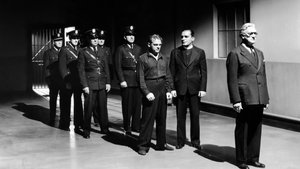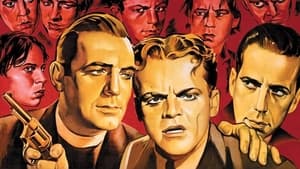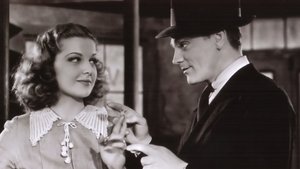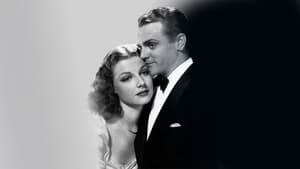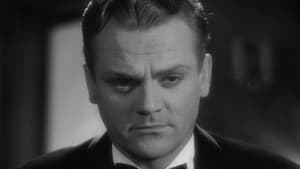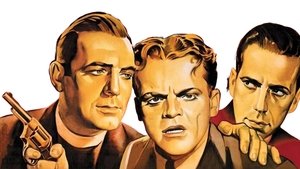Contact: info@alwanfilm.com
Video Sources 0 Views
- Watch trailer
- Angels with Dirty Faces


Synopsis
Table of Contents
ToggleReview: Angels with Dirty Faces 1938 Colorized – A Gritty Tale of Crime and Redemption

Introduction
“Angels with Dirty Faces” (1938) is a gritty and gripping crime drama that has stood the test of time, captivating audiences with its powerful performances and thought-provoking narrative. In this article, we will explore the significance of this classic film, examining its impact on audiences and its enduring legacy in the world of cinema.
Check The Full Colorized Movies List
Check Our Colorized Movies Trailer Channel
Understanding Angels with Dirty Faces: Director, Cast, and Genre
Directed by the legendary Michael Curtiz, “Angels with Dirty Faces” (1938) showcases his masterful storytelling and keen eye for detail. The film features a stellar cast, including James Cagney, Pat O’Brien, and Humphrey Bogart, who deliver standout performances that bring the seedy streets of New York City to life. Blending elements of crime, drama, and morality tale, “Angels with Dirty Faces” (1938) offers viewers a compelling glimpse into the darker side of human nature.
Exploring the World of Angels with Dirty Faces: Plot and Characters
Set against the backdrop of the Great Depression, “Angels with Dirty Faces” (1938) follows the tumultuous journey of two childhood friends who find themselves on opposite sides of the law. James Cagney delivers a tour-de-force performance as Rocky Sullivan, a charismatic gangster with a heart of gold, while Pat O’Brien shines as Father Jerry Connolly, a compassionate priest determined to steer Rocky onto the path of righteousness. As their paths converge and tensions escalate, the stage is set for a dramatic showdown that will test the limits of friendship and loyalty.
The Art of Film Colorization
Film colorization has the potential to enhance the visual experience of classic movies, breathing new life into timeless stories and captivating audiences with vibrant hues. By digitally adding color to black and white films, colorization allows viewers to immerse themselves in the rich tapestry of cinematic worlds, exploring every nuance and detail with fresh eyes and renewed appreciation.
Early Colored Films: A Brief History
The history of colored films traces its roots back to the early days of cinema, with filmmakers experimenting with various techniques to add color to their creations. From hand-tinted frames to early Technicolor processes, the evolution of colored film has been marked by innovation and ingenuity, paving the way for the development of modern colorization techniques that continue to captivate audiences to this day.
Angels with Dirty Faces and Its Early Colored Version
The decision to release “Angels with Dirty Faces” (1938) in a colorized format offers viewers a fresh perspective on this classic crime drama. While some purists may express reservations about altering the film’s original black and white aesthetic, others may welcome the opportunity to experience the story in vibrant color, which enhances the film’s visual impact and immerses audiences in the gritty world of streetwise hoodlums and conflicted heroes.
The Debate Over Film Colorization
The debate over film colorization remains a contentious issue in the world of cinema, with proponents arguing that it revitalizes classic movies for modern audiences, while detractors maintain that it compromises the artistic integrity of the original work. As filmmakers and audiences grapple with the implications of colorization, the debate continues to spark discussion and reflection on the ever-evolving nature of cinematic artistry.
Examining Angels with Dirty Faces as an Early Colored Film
As with any colorized classic, the impact of colorization on “Angels with Dirty Faces” (1938) is a matter of personal interpretation. Some may argue that it enhances the film’s visual appeal and immerses viewers in its world, while others may feel that it detracts from the stark beauty of the original black and white version. Regardless of one’s stance on the issue, there’s no denying the enduring power of “Angels with Dirty Faces” (1938) as a timeless crime drama that continues to captivate audiences with its gritty realism and unforgettable characters.
Influence and Legacy: Angels with Dirty Faces 1938 Colorized’ Impact on Cinema
“Angels with Dirty Faces” (1938) has left an indelible mark on the world of cinema, inspiring countless filmmakers and captivating audiences with its raw emotion and moral complexity. From its searing performances to its haunting cinematography, the film continues to resonate with viewers of all ages, reaffirming its status as a timeless masterpiece of the crime drama genre.
Director’s Cinematic Legacy: Beyond Angels with Dirty Faces
Michael Curtiz’s influence extends far beyond “Angels with Dirty Faces” (1938), with a diverse body of work that spans multiple genres and styles. From “Casablanca” to “Mildred Pierce,” Curtiz’s films are celebrated for their craftsmanship, storytelling, and visual flair, solidifying his legacy as one of the greatest directors in Hollywood history. Through his groundbreaking work, Curtiz has left an indelible imprint on the world of cinema, inspiring generations of filmmakers to follow in his footsteps.
Themes Explored in Angels with Dirty Faces 1938 Colorized
“Angels with Dirty Faces” (1938) explores a myriad of themes, from the allure of crime to the redemptive power of friendship and sacrifice. Through its richly drawn characters and provocative storytelling, the film invites viewers to confront the complexities of morality and the consequences of one’s actions. As audiences immerse themselves in the world of “Angels with Dirty Faces” (1938), they are challenged to reflect on the nature of good and evil and the choices that define our lives.
Reception and Controversy Surrounding Angels with Dirty Faces 1938 Colorized
Upon its release, “Angels with Dirty Faces” (1938) received widespread critical acclaim, with many praising its gritty realism, dynamic performances, and thought-provoking narrative. However, the decision to release the film in a colorized format sparked debate among purists, reigniting the age-old discussion surrounding film preservation and artistic integrity. Despite the controversy, “Angels with Dirty Faces” (1938) remains a beloved classic that continues to resonate with audiences of all ages, reaffirming its status as a timeless masterpiece of the crime drama genre.
Where to Watch Angels with Dirty Faces 1938 Colorized Online
For those eager to experience the timeless magic of “Angels with Dirty Faces” (1938), the film is readily available on popular streaming platforms such as Netflix, Amazon Prime, and Hulu. Whether you choose to watch it in its original black and white format or the early colored version, “Angels with Dirty Faces” (1938) promises to transport you to a world of crime, passion, and redemption, where the line between right and wrong is blurred and the human spirit shines brightest in the darkest of times.
FAQs About Angels with Dirty Faces 1938 Colorized
Q: Is “Angels with Dirty Faces” (1938) based on a true story? A: No, “Angels with Dirty Faces” (1938) is a fictional tale crafted by screenwriter Rowland Brown, who drew inspiration from real-life events and figures to create a compelling narrative that explores the complexities of crime, morality, and redemption.
Q: Who are the main actors in “Angels with Dirty Faces” (1938)? A: “Angels with Dirty Faces” (1938) features an ensemble cast led by the talented James Cagney, who delivers a riveting performance as the charismatic gangster Rocky Sullivan. Pat O’Brien shines as Father Jerry Connolly, while Humphrey Bogart delivers a memorable turn as Rocky’s ruthless accomplice.
Q: What awards did “Angels with Dirty Faces” (1938) win? A: While “Angels with Dirty Faces” (1938) did not win any major awards, it received critical acclaim for its powerful performances, gritty realism, and thought-provoking narrative.
Q: Why was “Angels with Dirty Faces” (1938) released in a colorized format? A: The decision to release “Angels with Dirty Faces” (1938) in color was made to introduce the film to a new generation of viewers and enhance its visual appeal for modern audiences. While the choice to colorize the film sparked debate among purists, it ultimately allowed “Angels with Dirty Faces” (1938) to reach a wider audience and ensure its continued relevance in the annals of cinematic history.
Conclusion
“Angels with Dirty Faces” (1938) remains a timeless classic that continues to captivate audiences with its gripping narrative, powerful performances, and thought-provoking themes. Whether viewed in its original black and white format or the early colored version, the film offers a compelling glimpse into the seedy underbelly of society and the redemptive power of friendship, love, and sacrifice. As we reflect on its enduring legacy, let us celebrate the indelible mark that “Angels with Dirty Faces” (1938) has left on the world of cinema, inspiring generations of filmmakers and audiences alike with its timeless tale of crime and redemption.

